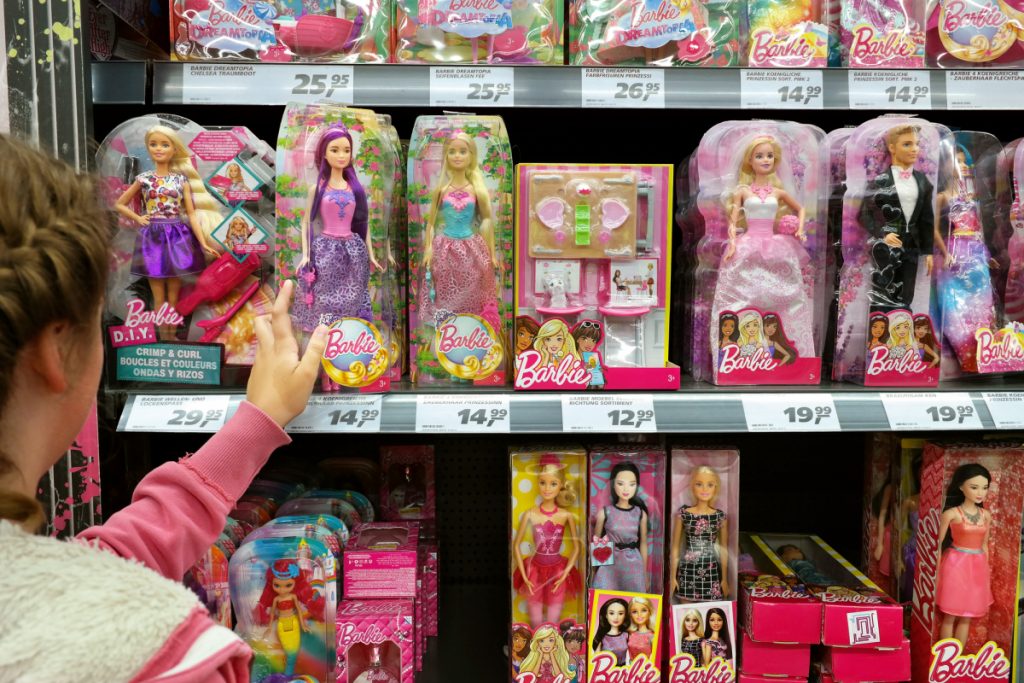For many businesses, becoming a household name is a dream come true. What should be next? Expanding to reach customers internationally would seem like a logical next step. However, for some popular American companies, selling to customers overseas isn’t so simple.
The dream of a product or service reaching the shores of a foreign land is one many entrepreneurs and business owners have. It is a dream that is easier said than done. Even for some of the most well-known brands on the planet. Here are eight companies that succeeded in the USA, but failed to expand internationally.
Walmart in Germany
Growing from humble beginnings, Walmart is a retail giant unlike any other. Walmart has a presence in nearly every American town and offers nearly anything you could want. With rock-bottom prices, Walmart has such a strong infrastructure that it has been able to rapidly respond with help for victims of natural disasters. Walmart’s loyal customer base has made it the largest private employer in the world. So, it might seem surprising that Walmart’s attempt to expand into Germany didn’t succeed.
Walmart explored international prospects by buying a piece of an existing Japanese company called Seiyu. But, ultimately, Walmart wasn’t successful in Japan either. What caused Walmart’s attempts to fail in Germany?
There are several factors said to have caused Walmart’s failure in Germany. The company’s poor management practices were “too American”, causing friction with employees and problems with the employee union.
Other problems with culture and traditions could have been avoided, had Walmart chosen to use German product buyers instead of American ones. These weren’t just bad hiring decisions. These American buyers didn’t understand what German customers wanted or needed. They weren’t in tune with their target market. Ultimately, this expansion failed because Walmart didn’t customize its plans to the German market. It was too American.
Best Buy in Europe
At one time, Best Buy was a very popular electronics retailer. In the 80s, the company went public on the New York Stock Exchange, a sign that great things were in its future. Certainly, Best Buy was becoming, if not already, a household name.
Best Buy was ambitious, wanting to expand its presence internationally. Setting its sights on the UK, it created a business model to sell to British customers. In 2008, it entered the UK, opening several stores. In 2012, all of these stores closed.
Unfortunately, the troubles of Best Buy aren’t over even in America today. The version that exists here in America has fallen on hard times that appear to be permanent. Best Buy layoffs and store closures have been announced. In early 2023, during an earnings call, the CEO of Best Buy announced that more stores here in America would be closing that same week.
Starbucks in Australia

Photo by Dom J: https://www.pexels.com/photo/starbucks-signboard-303324/
Timing may be everything, and when it comes to Starbucks in Australia, the timing was just too fast.
While there may have been potential for Australian coffee lovers to embrace the Starbucks brand, the company should have taken things slower. Instead of rolling out their plans and monitoring progress, Australian customers didn’t have time to develop an affinity for the brand. Instead, Starbucks went full-throttle.
And, because Starbucks was intent on moving so fast, they didn’t pick up on what their target market wanted. They could have adapted their menu to what Australian customers wanted by lowering prices or offering sweeter coffee.
Starbucks in Australia tried to grow too fast, and they failed as a result.
Home Depot in China
A slowdown of the real estate market, combined with a failure to understand its target market, made Home Depot’s expansion into China a lost cause. While American consumers love to take on DIY projects, it seemed that Home Depot overestimated the zeal of Chinese customers to take on such projects.
Another miscalculation for the Home Depot Chinese expansion effort was the store format. While American shoppers are used to shopping in large warehouse-style stores, it has been said that Chinese shoppers weren’t impressed by these. Store format matters, and Home Depot missed the mark in China.
Wendy’s in Japan
The story of Wendy’s expanding into Japan is a bit more complex. In 1980, the American quick-service brand Wendy’s entered the Japanese market. Known for serving burgers, fries, and its delicious Frosty, Wendy’s had a clearly Western influence.
Its presence grew to 71 stores, and, unlike some other companies that expanded internationally, Wendy’s did take into account some of the local tastes of its customers.
However, in 2009, it was ultimately a non-renewal with a Japanese franchisee that caused Wendy’s to halt operations in Japan.
Mattel in China

defotoberg/depositphotos.com
Generations of girls grew up playing with Barbie dolls. These dolls evolved throughout the decades, reflecting changes in culture and dress. Mothers and their daughters each had memories of playing with Barbie dolls. But Barbie changed with the generations in her style and dress, adapting to each generation of young girls. She even became a collector’s item for adult women.
So, when toy manufacturer Mattel decided to expand into China, it seemed like a no-brainer that bringing this toy to the most populated country on the planet would create massive profits. However, when Mattel opened a store in Shanghai in 2011, it wasn’t received as warmly as Mattel expected.
The biggest problem with this target market was that the target customers were women – not girls – who had grown up without Barbie. These young women had no history of Barbie in their youth. The way the store was created came off as strange. For these young women, there was no nostalgia to fall back on.
Without this nostalgia, they didn’t know what to make of Barbie. Had the leaders of Mattel better understood their target market, they could have modified their approach and change business models. However, that was not the case. Ultimately, the toy maker could not find a way to reach the people in China. The company’s failure to innovate caused Mattel to close its in China.
Target in Canada
Target’s failure in Canada in 2015 was largely due to a combination of poor planning, overly ambitious expansion, and disappointing customer experiences. Target attempted to launch 124 stores and a distribution network within a year, an aggressive expansion that proved logistically complex.
They took over old Zellers locations, which often required extensive renovations to meet Target’s standards. The rush resulted in many stores opening with partial inventory, leading to poorly stocked shelves. Pricing was another issue.
Canadian customers, familiar with cross-border shopping, expected similar prices to US Target stores. However, due to higher operating costs in Canada, prices were often higher, leading to customer dissatisfaction. Additionally, Target misjudged the Canadian market, assuming its brand loyalty would transfer seamlessly north of the border.
The gap between customer expectations and reality, coupled with supply chain issues, resulted in significant losses. This led Target to pull out of Canada less than two years after their initial entry, declaring it a financial failure. The lessons from Target’s Canadian venture serve as a stark reminder of the importance of understanding and adapting to local markets when expanding internationally.
McDonald’s in Iceland and the Caribbean
McDonald’s closed its restaurants in Iceland in 2009 due to the country’s financial crisis. The island nation’s financial system collapsed, leading to a sharp devaluation of the Icelandic Krona. As McDonald’s imported most of the ingredients for its menu, the cost of operations in Iceland became unsustainable. The local franchisee determined that to stay profitable, they would have to raise prices to a level that consumers wouldn’t accept. This illustrates the challenges multinational companies face when operating in economies highly dependent on imports, particularly during times of economic instability.
As for the Caribbean, McDonald’s has faced mixed results. In countries like Puerto Rico and the Dominican Republic, they have been quite successful. However, they’ve also had to withdraw from certain markets. One such example is Jamaica, where McDonald’s closed its restaurants in 2005.
The reasons are multifaceted. McDonald’s faced fierce competition from established local fast-food chains that better understood and catered to local tastes. Additionally, operational costs were high, and profits were low due to economic factors. McDonald’s experience in these regions highlights the importance of understanding local preferences, economic factors, and the competitive landscape when entering a new market.
Along with Jamaica, McDonald’s also failed to appeal to customers in Barbados. The chain opened one restaurant in 1996 but lasted less than a year before closing its doors for good.
Conclusion
Businesses that succeed in America don’t always succeed internationally. Even with the best-intended plans, businesses often fail abroad for a variety of reasons. Misunderstanding cultural differences, not understanding the target market, and attempting to grow too fast are just some of the reasons American companies have failed when trying to expand internationally.
Also read:
10 Successful Companies That Started During a Recession
7 Companies that Successfully Changed Business Models
10 Companies That Successfully Went Global














Pingback: 5 Companies that Took a Risk and Succeeded - StartUp Mindset
Pingback: Could This Training Report Be The Definitive Answer To Injecting Your Startup Venture With New Life? ·
Pingback: 8 Companies That Failed to Expand Internationally | Entrepreneur Canada
Pingback: 8 Companies That Failed to Expand Internationally – Austin Rotter
Pingback: 8 Companies That Failed to Expand Internationally – Andrea Zanon
Pingback: 8 Companies That Failed to Expand Internationally – Joseph Odierno Buffalo